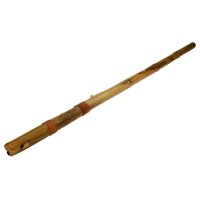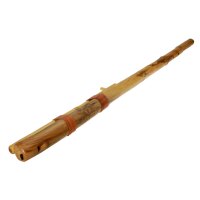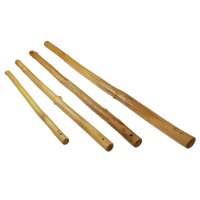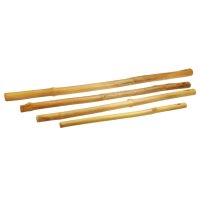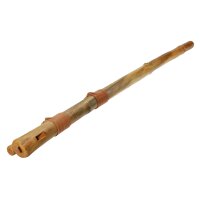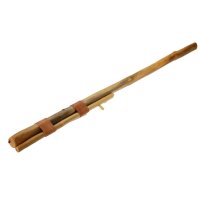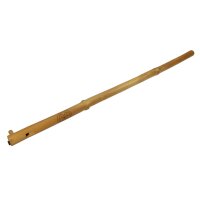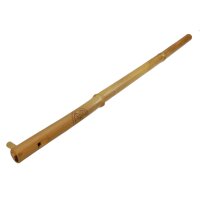In 1995 during the opening celebrations of the cultural centre of the Slovakian town of Detva, which was conducted by the president of the parliament (and the later president) of Slovakia, Ivan Gašparovič, he gave a memorable present at the reception of his guests. He accepted the invitation of the host to play a piece on the Fujara that calls the very region its home. Without a moment of hesitation, Gašparovič began to play a piece on the bass flute that has the height of a man. No other gesture could have conveyed to the town of Detva that Gašparovič is connected to Slovakian culture.
Detva is located at the bottom of a valley near the West Carpathians in Central Slovakia. Since the 1960’s, the small town is well-known as a centre of vivid Slovakian folklore. Detva is also the cradle of the shepherd’s flute Fujara. In the memory of the Slovakians, the Fujara has accompanied the concept of national sovereignty and independency for more than 300 years. With the founding of Slovakia in 1992, the Fujara became not only a cultural, but also a national symbol. Ivan Gašparovič himself was often giving one of these extravagant instruments as a gift to his state visitors. The Fujara can be seen in this field of tension between national roots, cultural adaptability, and modern adaption.
It is the distinctive size, the form and the sound that make the Fujara something special among the European flutes: its sound is deep, smooth and organic. At the same time, it also sounds agile, strange and futuristic, which is due to the dazzling high overtones up to 4 octaves. The melodies originate by skillfully combining hand movements with overblowing the basic tones. That’s how those special sounds come to life. They roar, flow, gently scream, call out, and time and again find rest in murmuring sound colours.
Instrument of Outlaws and Shepards
Among the Slovakian Fujara masters there are names like Pavol Smutný, Tibor Kobliček, Juraj Kubinec and Dušan Holík. They know how to play the traditional way. The Fujara music is based on a handed-down repertoire of shepherd’s and bandit’s songs. Yes, bandits and thugs were also companions of the Fujara. As the history of Central Slovakia goes, they were supposedly living on the meadows and in the woods, practically close neighbours of the region’s shepherds. When shepherding the herd, the shepherds were playing various flutes. Two of them are well-known: the little Koncovka and the big Fujara. The Koncovka is sometimes called the little sister of the Fujara. Its size is approx. 50 cm and it does not have any grip holes. The tones are merely generated by overblowing and opening as well as closing of the lower opening of the flute. The bigger flute, the Fujara, was considered as the instrument of the herd leader and highest-ranking shepherd. The smaller Koncovka was rather played by his assistants. That is also one of the reasons the Fujara is being called the “queen of the Slovakian music instruments”.
The above-mentioned close vicinity of shepherds and social outsiders is reflected in the portfolio of the Slovakian songs: those songs do not merely tell about the life with nature and an emphasis on humane and sincere interconnections. Those are also improvised pieces that reconstruct the flow of the river or the murmuring of the trees. The disenfranchised people that lived outside of the villages incorporated the call for justice and freedom against occupation and suppression into their songs. The robbers and the bandits of the 17th century are also the ones that are considered as fighting for Slovakian independency. Their most well-known representative was the robber Juraj Jánošík who today is regarded as a national hero.
Fujara Playing Technique
The handed-down songs for the Fujara combine instrumental play and singing. That’s why the Fujara players have been good singers, too. A performance usually begins with the signature motif, a signal that is called rozfuk. The whole range of tones is played from the highest until the lowest tone of the instrument. Traditionally, on the Fujara a 12-tone, Mixolydian scale is being played. After the opening tune rozfuk follows the first strophe, which is freely played with rich improvisations. Right after the Fujara player stops playing, he starts singing the strophe, to present the text to the listener. The master Ladislav Libica gives an example of such traditional performance in the recording of the tune “Kade idem, vsade trniem”, „Wherever I go, I tremble“:
The size of the Fujara is impressive. Its tube is up to 200 cm long. It is rarely shorter than 140 cm. The player holds the instrument vertically in front of the body. Due to its length, the Fujara is played with a mouthpiece that is connected to the body of the instrument and thus makes it easier to play. The blowing technique is similar to the one of the South American Moseño flute. That is why the Fujara (same as the Moseño) is relatively easy to play. Equally to the recorder the tone is generated by a so-called windway. The player blows air through the pipe and a tone emerges instantly. The challenge of playing the Fujara well lies in applying the correct grip and breathing technique.
The Fujaras have three grip holes at the front and they are located at the lower third of the instrument. The player often needs to stretch his or her arms to reach the grip holes. The middle finger of the left hand covers the most upper grip hole. The right hand is being led to the lower tone holes. The thump of the right hand covers the middle grip hole and the middle finger the lower tone hole. In general, the Fujara does not have a grip hole for the thump at the back of the pipe. A video shows the fingers of the highly recognized Fujara master Dušan Holík at work:
Unfortunately, we don’t know much about the origins of the Fujara. There is certainty that the making of those instruments can be dated back to the 17th and 18th century. Possibly, other music instruments of the art music sector played a role in its evolution. The bassoon and the Baroque bass recorder may have provided inspiration for making the Fujara.
The Fujara in the 21st Century
Any Fujara is unique and something special. The instrument is still being hand-made. That is why every single one of them follows an individual aesthetic and tonal concept. Over the years, responding to demand the construction method was continuously adapted to the needs of the musicians. Today’s instruments meet the current needs as they are easily transportable, perfectly tuned and therefore combinable with other instruments. The distance of the grip holes, too, is slightly more convenient if compared to older instruments.
The length of DAN MOI Fujaras are 150 cm or 170 cm and they are made of elder-wood. They have a splendid production quality, are well-tuned, and carefully treated to last for a long time. The flutes are tuned to the 4 basic tones A2, B(H)2, C#3 and D3 or G2, A2 B(H)2 and C3. The newly developed Fujara Integral, with which you can improvise wonderfully, can be played more intuitively. The range can be extended by many tones of the overtone series. When blowing the breathing air into the instrument with a varying intensity more tones of the overtone range can be produced by applying the “overblowing” technique. The Fujaras of DAN MOI are made by a Slovakian instrument maker who has his studio in Czechia. The Fujaras have a delicate ornament in the upper part of the flute. The surface of the flute is treated with linseed oil. They also bear a valve by which condensation water emerging during playing can be discharged.
Today, there are more Fujara players than ever, not only in Slovakia, but also in other countries of Europe and the American continent. Meanwhile they are rarely shepherds, but work e.g. as doctors, teachers, electricians or lawyers. New compositions for the melancholic bass flute emerge, and more and more people become interested in the instrument. For many years, musicians from jazz or world music have discovered the Fujara and have been bringing her into play in various settings. Musicians as Marco Trochelmann, Bernhard Mikuskovics or Max Brumberg have made the Fujara popular beyond national borders. Nowadays, the Fujara with its touchingly deep and smooth sound is used for therapeutic purposes or for meditation.
In Slovakia itself awareness for the Fujara has been significantly raised with the won independence in 1993. After the founding of the Folklore Festival and with instrument research in the 1960’s a first increase was already perceivable, in 1975 a Fujara competition for players and instrument makers followed. The latter can be seen as the starting point for the revival of the instrument and its repertoire. The Fujara has become known throughout Slovakia, though its traditional centre is still located in the region of Podpol’anie, Central Slovakia.

